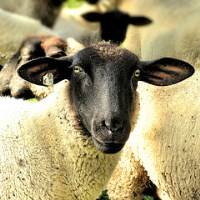Rites of the Day of Nahr
11/10/2011| IslamWeb
The Day of Nahr is the day of ‘Eed Al-Adh-ha, the Day of the Great Hajj and the best day of the entire year, according to scholars. These great virtues and merits are due to the fact that it coincides with great rites of the Hajj that are carried out by the pilgrims and acts of worship that are carried out by non- pilgrims.
The pilgrims perform the following rituals:
1) Throwing the Jamrah of Al-‘Aqabah, which is the closest to Makkah, with seven consecutive pebbles in the morning of the ‘Eed Day and the time of throwing extends up to night. Throwing the pebbles is the greeting of Mina. This is the first rite on the Day of ‘Eed; the pilgrims should perform this ritual first if possible as it was the first rite that the Prophet ![]() did on the Day of Nahr.
did on the Day of Nahr.
2) Slaughtering the Hady (sacrificial animal) if affordable; as the Prophet ![]() slaughtered the Hady on the Day of Nahr. If the pilgrim cannot offer a Hady on that day, he can offer the sacrificial animal on any of the following three days and nights. This is a flexible matter; praise be to Allah.
slaughtered the Hady on the Day of Nahr. If the pilgrim cannot offer a Hady on that day, he can offer the sacrificial animal on any of the following three days and nights. This is a flexible matter; praise be to Allah.
3) The male pilgrim should shave his head or shorten his hair, but shaving is preferable, in order to end the state of Ihraam (ritual state of consecration). Shaving is preferable as the Prophet ![]() supplicated for the pilgrims who shaved their heads with mercy thrice and once for those who shortened their hair. If the pilgrim chose to shorten his hair, he should have all his hair shortened, as it is a vital ritual that should not be taken lightly.
supplicated for the pilgrims who shaved their heads with mercy thrice and once for those who shortened their hair. If the pilgrim chose to shorten his hair, he should have all his hair shortened, as it is a vital ritual that should not be taken lightly.
4) Tawaaf around the Ka‘bah and Sa‘y if the pilgrim, who is performing Tamattu’ Hajj, Qiraan or Ifraad, had not made Sa‘y after the Arrival Tawaaf. Throwing the pebbles, shaving or shortening his hair, Tawaaf around the Ka‘bah, and Sa‘y after Tawaaf for those who should perform it. These rites are common among all the pilgrims. The pilgrim who performs two of these rites can end his first state of Ihraam and consequently be entitled to wear non-Ihraam clothes and perfume and trim his nails. Engaging in sexual intercourse with his wife is not lawful except after carrying out all these rites.
5) The pilgrims as well as non-pilgrims may offer the Udh-hiyah, recite Takbeer and Thikr on the Day of ‘Eed and the days of Tashreeq and their nights. These rites are righteous deeds and means by which one can come closer to Allah The Exalted. Performing them on the Day of ‘Eed is a celebration of these rites. This is a sign of the righteousness of the hearts and fear of Allah, The Knower of the Unseen.

